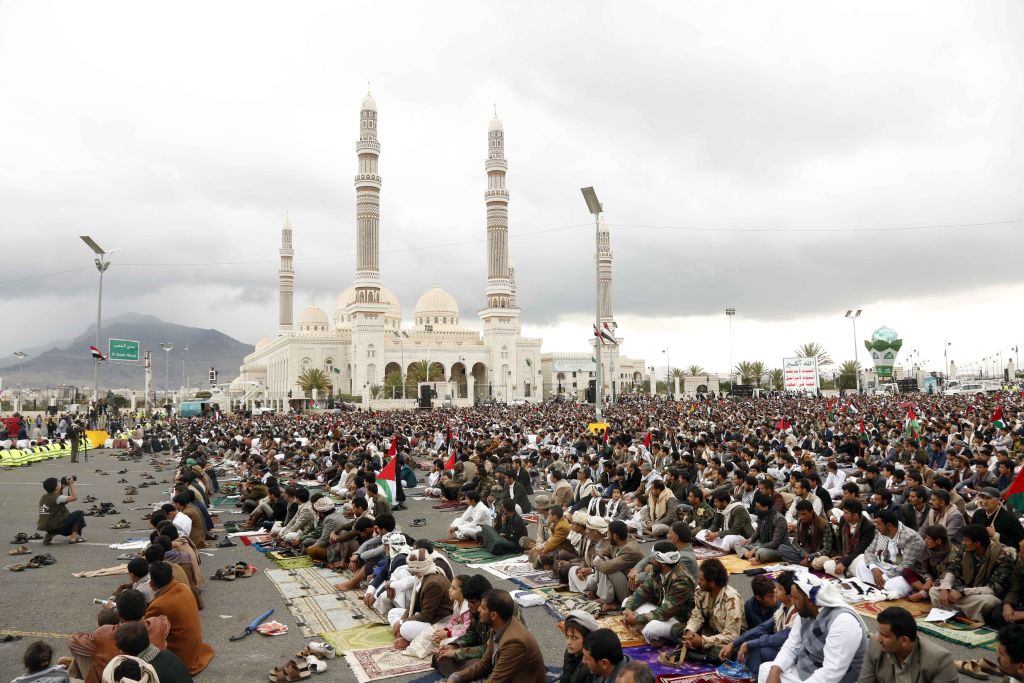The question is so much bigger than simply who was there first.
For the people chanting “from the river to the sea” and blaming Israel for the current war against Hamas, the Muslim people of Palestine are perpetual victims. Those who support Israel, however, point to the fact that the Jewish people held the Holy Land long before Muslims – indeed, long before Islam even existed. There’s more to the conflict, however, than simply who was there first. Clever slogans and pro-Palestinian protests aside, it wasn’t the Israeli’s who refused to coexist.
In the Beginning
What has become the Holy Land in the three major monotheistic religions of the world today was once called Canaan and occupied by Canaanites, a polytheistic people. Both the names Canaan and Canaanite appear in cuneiform, Egyptian, and Phoenician writings dating back to 15th century BC. According to Jewish scripture – or the Old Testiment, to Christians – God promised this land to the descendants of Abraham.
Somewhere around 1,000 years after this, scripture says the 12 tribes of Israel – named for the 12 sons of Jacob, Abraham’s grandson whom God renamed Israel – fled Egypt and, after roaming the desert for 40 years, finally entered the promised land. There they fought the Canaanites and Philistines – from whom the name Palestine derives – and eventually established a kingdom, uniting the 12 tribes under King David in about 1,000 BC. His son, Solomon, built the first Temple about 40 years later.
So yes, the Jewish people did occupy Palestine, taking it from the original inhabitants – but those displaced weren’t the Arab Muslims who now claim the Holy Land. They came many centuries later and ousted the Jews.
Fighting for the Holy Land
By the time Muhammad, the founder of Islam, was born in AD 570, Israel had been conquered multiple times already by other empires, from Babylon to Rome. The Jewish people had been exiled and returned, more than once, and the population was a mix of Jews, Christians, and polytheists, but it was ruled by Rome, which had become a Christian empire. Muhammad’s new religion was rooted in Judaism and Christianity, and therefore revered many of the same historical figures and locations.
 In AD 638 – just five years after the death of Muhammad – Muslims took Jerusalem for the first time. Jews and Christians were initially allowed to remain and lived under a protected status, but that had to be paid for in special taxes. Eventually, the taxes grew – as did the restrictions on public conduct, which interfered with Jewish religious practices, leading many Jews to flee the Holy Land.
In AD 638 – just five years after the death of Muhammad – Muslims took Jerusalem for the first time. Jews and Christians were initially allowed to remain and lived under a protected status, but that had to be paid for in special taxes. Eventually, the taxes grew – as did the restrictions on public conduct, which interfered with Jewish religious practices, leading many Jews to flee the Holy Land.
From 1095 to 1102, Christian forces from Western European kingdoms fought in what we now call the First Crusade to retake the Holy Land from Muslim control. Jerusalem itself was captured in the summer of 1099. This Christian control, however, was short lived. In 1187, Saladin, the Sultan of Egypt and Syria, who had united the core of the Islamic Empire, managed to retake Jerusalem and, eventually, the rest of Palestine.
Further Crusades saw Christians in control of some parts of the Holy Land for a time, but not for long, and never the prized city of Jerusalem.
Britain, the UN, and the Two-State Failure
The Ottoman Empire – whose official religion was Islam – ruled the region from the 1500s up until World War I. The League of Nations placed the region of Palestine and several other Ottoman territories under British control in 1922. All but Palestine became fully independent states.
The British Mandate incorporated the Balfour Declaration of 1917, which supported the establishment of a national home for the Jewish people inside Palestine. From 1922 to 1947, Jews from around the world – though mostly from Eastern Europe – migrated to the region, many of whom were fleeing Nazi persecution.
In 1948, an attempt at partitioning the land into two independent states failed, resulting in the establishment of Israel as a nation the West Bank and Gaza falling under Jordanian and Egyptian rule, respectively. The UN’s partition plan, called US Resolution 181, came as the UK prepared to withdraw from the region. It would have divided Palestine into an Arab nation and a Jewish nation, with the Palestinians gaining more land than the Israelis. It would have made Jerusalem a special international city, open to both peoples.

(Photo by Mohammed Hamoud/Anadolu via Getty Images)
Israel agreed to the plan, but Palestinian leadership rejected it, launching a war against Israel instead. At By the end of the Arab-Israeli War, Israel had occupied more land than originally granted by the plan. This cycle of Israel agreeing to a plan that favors Palestine, only for Palestinian leaders to reject it, launch a war, and end up losing more land in the process continued through multiple more attempts, all the way through the failed two-state solution President Bill Clinton hoped to achieve in 1993.
The war with Hamas today – sparked by the October 7 terror attack in Israel – is little different. The Jews and Muslims of Palestine and Israel are unable to live in peace, largely because the Palestinian authority seeks not peaceful coexistence, but the utter destruction of Israel. From the river to the sea, Palestine will be free – but if a Muslim Palestine ruled by a terrorist group like Hamas extends from the Jordan River to the Mediterranean Sea, where does that leave the Jewish people?

